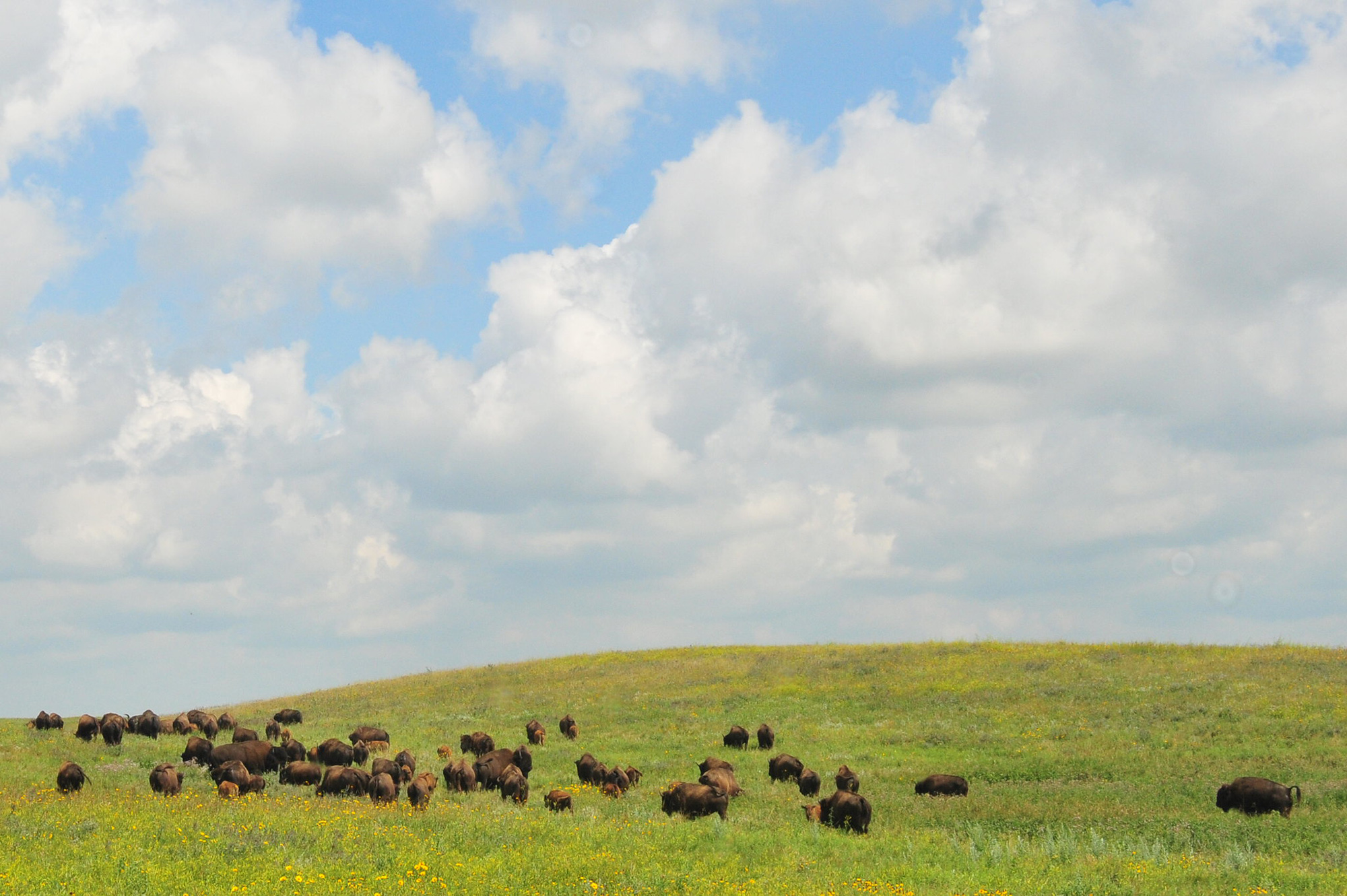The Long-Awaited Grasslands Conservation Act Is Finally Introduced in Congress
A bipartisan quartet of U.S. representatives today introduced the North American Grasslands Conservation Act which, if passed by Congress, would create an incentive-based fund to sustain and restore grasslands ranging from coastal savannas to the West’s sagebrush-steppe to remnants of tallgrass prairies in the Great Plains.
The mechanism proposed by the Grasslands Act mirrors that of the North American Waterfowl Conservation Act, which over the past 35 years has used voluntary, incentive-based funding to conserve some 32 million acres of wetland habitat and is credited with boosting waterfowl and shorebird populations.
America’s grasslands have been called our most imperiled landscape. Fewer than 40 percent of the estimated 550 million acres of grassland remain, and most of that is fragmented or compromised by invasive species, encroaching trees, or the widening Corn Belt. In the Canadian and American portions of the Great Plains, an estimated 1.9 million acres of grassland were converted to crops in 2022 alone. Because of grasslands’ capacity to sustain a mosaic of plants and animals, the loss of acreage has caused a precipitous drop in species populations and diversity.
The Grasslands Act aims to reverse the loss of native grasslands by creating a fund that landowners, tribes, and both governmental and non-governmental organizations could tap for conservation and restoration work. The success of the North American Wetlands Conservation Act, enacted in 1989, has been widely credited to that very approach. NAWCA grants are administered by the U.S. Fish & Wildlife Service and awarded through a competitive process to projects that create, improve, or enlarge wetlands.
“By any measure, NAWCA has been a wildly successful program,” says Kaden McArthur, government relations coordinator for Backcountry Hunters & Anglers, one of the groups pushing for similar grasslands-conservation legislation. “Since 1989 NAWCA has conserved more than 32 million acres of wetlands. Over that period, grassland bird species have declined by 40 percent while waterfowl populations on the whole have gone up. Certainly not all that [increase] can be attributed to NAWCA, but NAWCA has been the premier, primary program for wetlands conservation in the U.S. and across North America. We think the NAWCA model is what grasslands conservation needs in order to be successful.”
The North American Grasslands Conservation Act, which doesn’t currently have text, will be referred to the House Natural Resources Committee for consideration, draft language, and eventual hearings. Advocates of the bill don’t expect it to get a hearing before the 118th Congress adjourns in December.
“We know, with the election looming and legislative gridlock, that most ordinary business is wrapped up for the 118th Congress,” says McArthur. “But introducing this now gives us a really good launch point for the next Congress, so that we can have a set of co-sponsors advocating on Day One to get it worked up and passed.”

Photo by Tom Koerner / USFWS
The House version is similar to a Senate bill introduced in the previous Congress. That bill, co-sponsored by Democrats Ron Wyden (Oregon), Amy Klobuchar (Minnesota), and Michael Bennet (Colorado), would authorize up to $290 million per year for grasslands-conservation grants. The House bill would authorize less money, $60 million annually to start, and has bipartisan support — both elements that McArthur says give it a fighting chance in the fractious, fiscally conservative House.
The House version is sponsored by South Carolina Republican congresswoman Nancy Mace and co-sponsored by Democrats Sharice Davids (Kansas) and Mike Thompson (California), and Republican Brian Fitzpatrick (Pennsylvania). The House version has broad support from more than 40 conservation groups, including Pheasants Forever, Quail Forever, National Wildlife Federation, American Bird Conservancy, Theodore Roosevelt Conservation Partnership, and many others.
McArthur said bill advocates and sponsors intend to work to ensure that the House and Senate bills are closely aligned.
Provisions of the House bill would create a North American Grasslands Conservation Plan that would direct conservation priorities and a national strategy for conserving and restoring grasslands. The plan would then authorize the creation of a competitive grant mechanism to provide funding to landowners, states, tribes, local governments, and non-governmental organizations to support voluntary, partner-led conservation projects, including:
- Grassland management, including control of invasive species, prescribed fire, and grazing
- Grassland restoration, including restoration of remnant grasslands
- Grassland easements
- Education and outreach
Several sources noted that the prospects for passage of legislation that authorizes new funding will need to have plenty of advocates in Congress. But they also noted that, with the Farm Bill stalled until at least next year, alternative funding for conservation may be welcomed, especially by legislators who represent ag-heavy states.
Read Next: Where Are All the Ducks?
The Grasslands Conservation Act “is not intended to replace or offset conservation funding through Farm Bill programs,” says McArthur. “But when it comes to grasslands conservation, there is a high correlation to what is happening in the agricultural community and what is considered in the next Farm Bill, which is now a year overdue.”
“We’re seeing USDA programs being frozen by the Farm Bill cycle,” says McArthur. “The grasslands funding is designed to run through grants administered by the Fish and Wildlife Service, so it wouldn’t be held hostage to the indefinite pause that’s defining the Farm Bill. Part of the idea of this bill is to allow for diversification of conservation programs. Not all our conservation eggs would be in one basket.”
The post The Long-Awaited Grasslands Conservation Act Is Finally Introduced in Congress appeared first on Outdoor Life.
Source: https://www.outdoorlife.com/conservation/national-grasslands-act-introduced/




